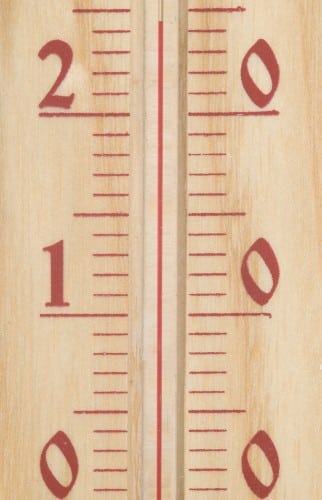The race for the absolute temperature scale is heating up

The most accurate thermometer in the known universe doesn't look like a thermometer at all. It is a copper container the size of a watermelon, filled with extremely pure argon gas and embedded with microphones and antennas for receiving and transmitting microwaves. However, the purpose of the facility, located at the British National Physical Laboratory (NPL) complex in Teddington, England, is not only to measure temperature. In fact, this device, and others like it, may allow scientists to recast the concept of temperature and rewrite it in terms of basic physics.
The intention is to link temperature and energy through a physical constant. Today, the standard international temperature unit, the degree Kelvin, is based on the properties of water. But scientists are interested in aligning themselves with other units of measure, already freed from the vagaries of the macroscopic world. For example, the standard unit of time, the second, is currently defined by the oscillations of a cesium atom and the unit of distance, the meter, is related to the speed of light in a vacuum. "It's completely silly that the Kelvin temperature does not directly link temperature to energy," says Michael DePodesta, who heads the research team.
The facility at NPL measures the Boltzmann constant, which links changes in energy to changes in temperature. DePodesta's team, and competing teams, hope to measure this constant with a precision great enough to relate one degree Kelvin to a certain number of joules of energy.
The new thermometer, or as it is technically called the "acoustic resonator", rings like a bell when the physicists feed certain sound frequencies into its microphones. Using this sonic resonance, the researchers can determine the speed of sound in the gas filling the vessel and hence the speed of the argon atoms, i.e. their kinetic energy. In July 2013, de Podesta's team reported the results of the most accurate measurement of the Boltzmann constant to date in the journal Metrology.
The definition of temperature today is based on changes in the aggregation states of water. One of the key points in the definition is the "triple point of water", whose temperature is 273.16 degrees Kelvin, and where solid (ice), liquid and gaseous water exist side by side. In 1954, an international agreement defined the Kelvin degree as 1 divided by 273.16 of the difference between absolute zero and the triple point of water.
The 1954 definition usually works well, but it starts to go wrong at extreme temperatures, such as those inside stars. "This is due to the fact that humans started measuring temperatures long before they understood what temperature even is, before they knew that temperature is just atoms and molecules flying at speed here and there," says de Podesta. "Now that we understand better, and we have an opportunity to correct, we must do so."
The article was published with the approval of Scientific American Israel

5 תגובות
T=1.5*E/k
A nice way to receive greetings from my undergraduate lecturer...
So am I hot or cold?
The article says: "Boltzmann constant" - and I ask: where is Israel Shapira? 🙂
Besides, it also says: "273.16 degrees Kelvin" - and the writer/translator must have meant Celsius.
The article says: "Boltzmann constant" - and I ask: where is Israel Shapira? 🙂
Besides, it also says: "273.16 degrees Kelvin" - and the writer/translator must have meant Celsius.